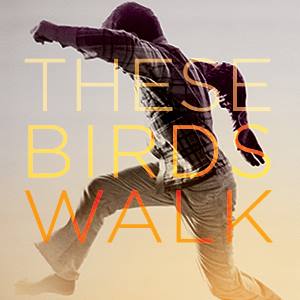 One shouldn’t expect to understand the meaning behind an intriguing film title during the first few frames. But as the camera trains on a light-bathed room in These Birds Walk, you might be fooled into thinking the metaphor’s apparent.
One shouldn’t expect to understand the meaning behind an intriguing film title during the first few frames. But as the camera trains on a light-bathed room in These Birds Walk, you might be fooled into thinking the metaphor’s apparent.
Spindly babies are presented to a wizened man who lowers them into a washtub rinse, and their sopping bodies make them look like hatchlings just poking out from their eggs. Their huge eyes framed in wet lashes appear surprised, even as they seem to take in the scene with a measure of equanimity.
The elder is Abdul Sattar Edhi, who’s seen only briefly in the documentary that chronicles life at his Edhi Foundation, a home for runaway boys that doubles as an ambulance service in bustling and weary Karachi, Pakistan.
The story of Edhi’s work is fairly well known, but These Birds Walk directors Bassam Tariq and Omar Mullick’s rendering turns it into a parable about human resilience — and the human at the center of their story is not Edhi. He steered the directors toward the boys and men who filter in and out of the home, as residents and employees. The children, in particular, are the ones spouting poetry for much of the film: funny, poignant, and affecting commentary that sounds like people learning to fend for themselves, emotionally and otherwise.
To understand their resilience, you must first see their vulnerability, and the film wastes no time taking you there, as you witness boys shrinking from their new “brothers” even as they ask, sometimes directly, for their love. There’s a Lord of the Flies quality to their days, where size and scrappiness aren’t necessarily the determinants of who emerges as a victor in their tussles. Rather, the audience sees the complexities of their playfulness, religiosity, boredom, despair, and interdependence, not to mention their sentiments toward their families at home, all of which seem to play a role in the fluctuating social rankings.
One of the film’s most marvelous scenes was apparently a belated gift, one that didn’t become visible to the filmmakers until post-production. Reviewing some of the late night shots of their protagonist Omar sleeping, they saw him mumbling. What they had captured (and also credit in large part to their sound editor Damian Volpe) is something quite remarkable: a plaintive prayer, murmured in the candlelit night and seemingly shot within inches of Omar’s tear-streaked face.
It happened on one of those nights when the electricity was on the blink, director Bassam Tariq told me, and the children would sleep outside on marble slabs until the power returned. “These moments, where the kids lie near the candles, still haunt me. Some kids would help others fall asleep by sharing stories. Others would hold together and cry. All of them would pray.”
Recorded and shot with a boom mic and a simple DSLR, the camera work in These Birds Walk is a glory. But the intimacy it suggests is hardly just a technical accomplishment. The directors communicated with the children in Urdu, and played, eat, and prayed with them.
When I asked Tariq about this approach, he suggested they had been vexed by the phenomenon of “bridge characters” — white male interlocutors — whose experience of a story becomes its lens.
“Everything else is an accessory,” he said, which bothered and bored him and Mullick. “We were acutely aware of what we were doing. And made sure to champion the beautiful people of our motherland. And it required us to sweat and bleed a little more. But…we pray that the difference is visible, and is what puts us above the mediocrity that many lazy journalists and filmmakers try to pass as an ‘authentic’ experience of the region.”
As you may have read, tickets to Thursday’s screening of These Birds Walk in San Francisco are sold out, but you may be able to get in if you show up early.
Otherwise, you can watch follow along here as the film takes flight.
You can follow Nishat Kurwa on Twitter @nishatjaan.












